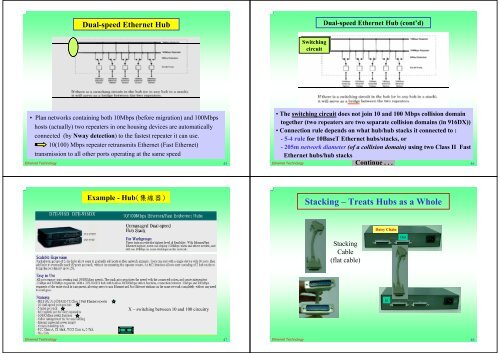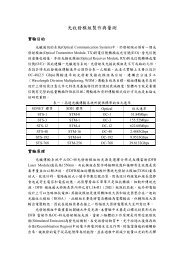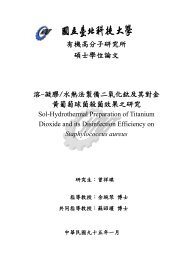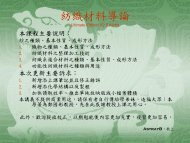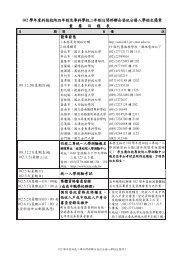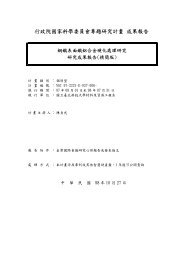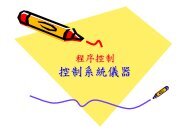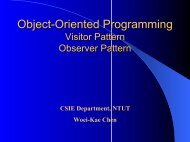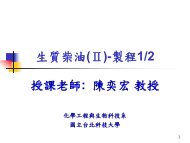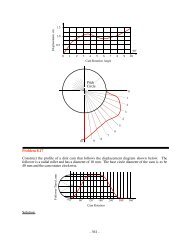Ethernet Technology
Ethernet Technology
Ethernet Technology
Create successful ePaper yourself
Turn your PDF publications into a flip-book with our unique Google optimized e-Paper software.
Dual-speed <strong>Ethernet</strong> Hub<br />
Dual-speed <strong>Ethernet</strong> Hub (cont’d)<br />
Switching<br />
circuit<br />
• Plan networks containing both 10Mbps (before migration) and 100Mbps<br />
hosts (actually) two repeaters in one housing devices are automatically<br />
connected (by Nway detection) to the fastest repeater it can use.<br />
10(100) Mbps repeater retransmits <strong>Ethernet</strong> (Fast <strong>Ethernet</strong>)<br />
transmission to all other ports operating at the same speed<br />
<strong>Ethernet</strong> <strong>Technology</strong> 45<br />
• The switching circuit does not join 10 and 100 Mbps collision domain<br />
together (two repeaters are two separate collision domains (in 916DX))<br />
• Connection rule depends on what hub/hub stacks it connected to :<br />
- 5-4 rule for 10BaseT <strong>Ethernet</strong> hubs/stacks, or<br />
- 205m network diameter (of a collision domain) using two Class II Fast<br />
<strong>Ethernet</strong> hubs/hub stacks<br />
Continue . . .<br />
<strong>Ethernet</strong> <strong>Technology</strong> 46<br />
Example - Hub<br />
Stacking – Treats Hubs as a Whole<br />
Daisy Chain<br />
Stacking<br />
Cable<br />
(flat cable)<br />
Out<br />
In<br />
X ~ switching between 10 and 100 circuitry<br />
<strong>Ethernet</strong> <strong>Technology</strong> 47<br />
<strong>Ethernet</strong> <strong>Technology</strong> 48


